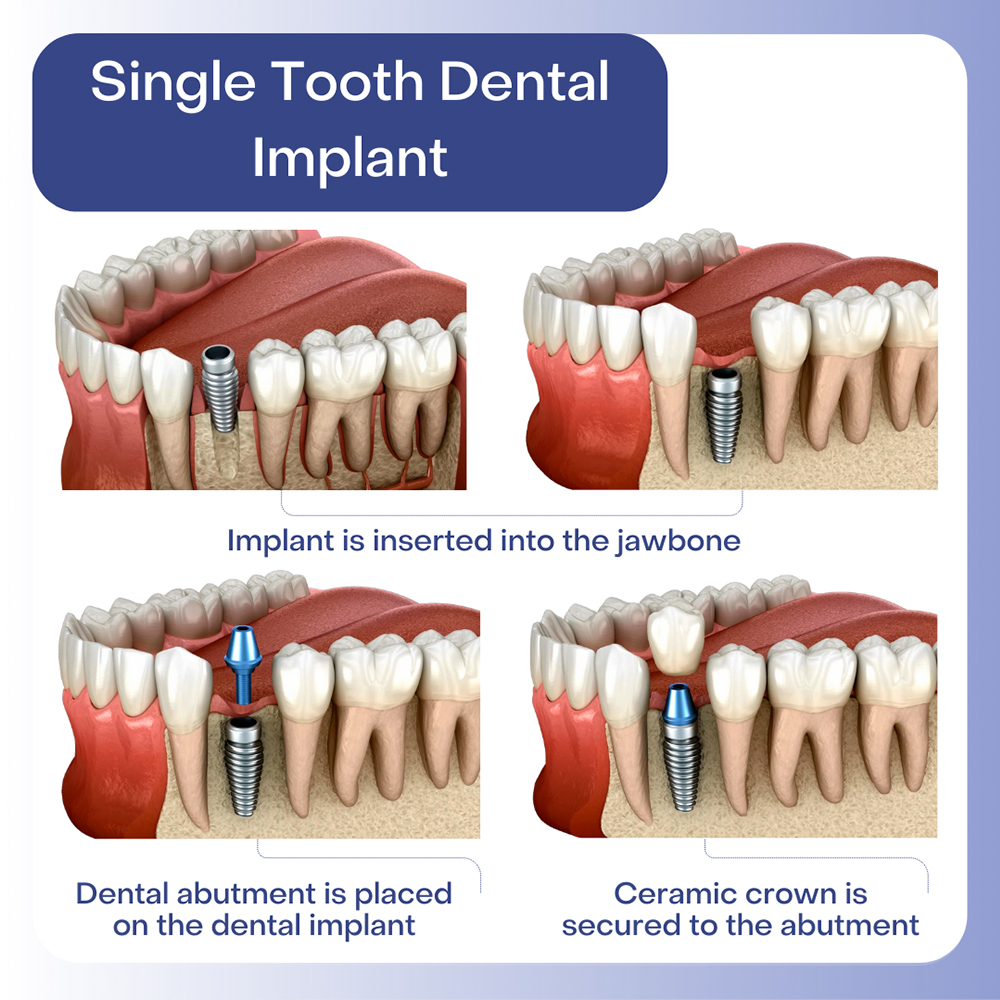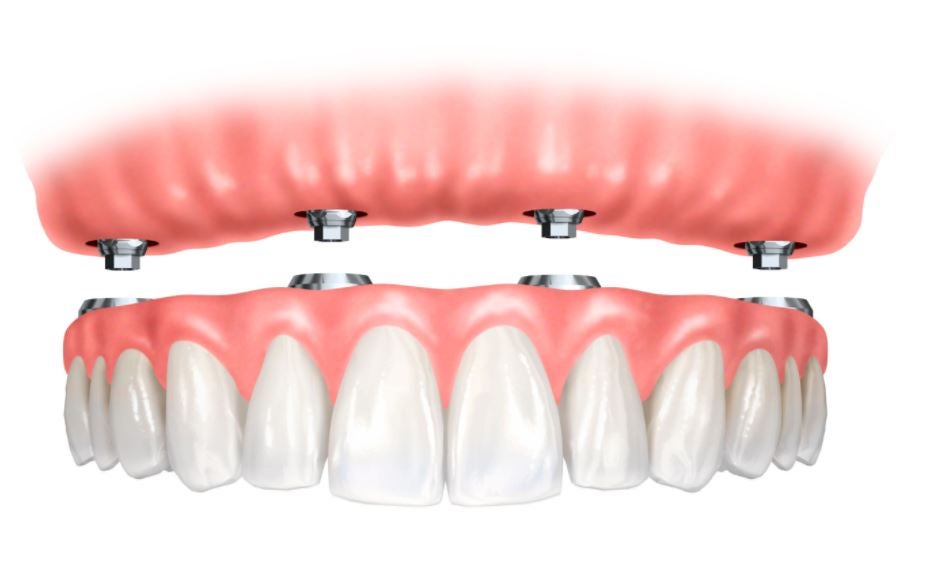All about Dental Sense
All about Dental Sense
Blog Article
The Ultimate Guide To Dental Sense
Table of ContentsAll About Dental Sense3 Easy Facts About Dental Sense DescribedDental Sense for DummiesDental Sense - An Overview
are medical tools operatively implanted right into the jaw to recover an individual's capacity to chew or their look. They offer assistance for man-made (phony) teeth, such as crowns, bridges, or dentures. When a tooth is lost as a result of injury or illness, an individual can experience issues such as rapid bone loss, faulty speech, or modifications to eating patterns that result in discomfort.Oral dental implant systems contain a dental implant body and oral implant abutment and might likewise consist of an abutment fixation screw. Professional teeth whitening. The oral implant body is operatively placed in the jawbone in location of the tooth's root. The dental implant abutment is generally affixed to the dental implant body by the abutment fixation screw and extends with gum tissues into the mouth to sustain the connected man-made teeth
(https://www.behance.net/matthewmusic)Framework of The Oral Implant System selecting dental implants, talk with your dental supplier about the possible benefits and risks, and whether you are a prospect for the procedure. Things to consider: Your general health and wellness is an essential consider identifying whether you are a good candidate for dental implants, exactly how long it will require to recover, and the length of time the dental implant may remain in place.
Cigarette smoking may influence the recovery process and lower the long-term success of the dental implant. The healing process for the implant body may take numerous months or longer, during which time you typically have a short-lived joint in place of the tooth. the oral implant procedure: Very carefully comply with the oral hygiene instructions provided to you by your oral provider.
Some Of Dental Sense
Implant failing can cause the requirement for one more procedure to repair or replace the dental implant system. Brings back the capacity to chew Restores aesthetic look Assists keep the jawbone from reducing as a result of bone loss Preserves the health of the bordering bone and periodontals Helps keep adjacent (close-by) teeth steady Improves top quality of life Damages to surrounding all-natural teeth during implant positioning Injury to the surrounding tissues throughout surgery, such as sinus opening Injury during surgery (for instance, fracture of bordering jawbone) Poor feature, such as really feeling like the teeth do not attack with each other usually A feeling that the tooth hangs or twisting in location resulting from an abutment screw loosening Implant body failure (looseness of the dental implant body) due to systemic infection, which may be more probable in individuals with uncontrolled diabetes mellitus because of regional infection in bone and gums sustaining the dental implant body because of delayed healing, which might be most likely in people who smoke Problem cleaning the periodontals around the implant, causing inadequate oral health Without treatment periodontal disease Post-surgical pins and needles because of nerve impingement or damage Constantly alert health care suppliers and imaging professionals that you have oral implants prior to any kind of magnetic resonance imaging (MRI) or x-ray procedures.
FDA is not familiar with any negative occasions reported for MRI or x-ray procedures with dental implants. Oral implants systems are normally made of materials that follow global agreement requirements of the International Company for Standardization (ISO) or ASTM International. These criteria have details of what makes a secure product.

An oral implant is a framework that replaces a missing out on tooth. With screw-like devices, the surgeon inserts an implant right into the jawbone, and it acts as an anchor for a fabricated tooth, called a crown.
The Of Dental Sense
Some people are not eligible for oral implant surgery. It is for oral surgeons to operate on individuals with: intense illnessuncontrollable metabolic diseasebone or soft tissue disease or infectionIf these problems are dealt with, a person can have the surgery. In, dental specialists avoid from running on individuals with: If people with any one of the above undergo oral implant surgical procedure, there is a greater risk of the implant falling short.

Dental dental implant surgical procedure is a tailored procedure. It's not the very same for everybody. However the complying with offers a basic overview of what you can expect your dental professional, dental specialist, periodontist or prosthodontist to do: Place the dental implant operatively. Provide you time to heal. Affix the blog post and last crown, bridge or denture.
Next, your surgeon will meticulously position the oral implant into your jaw. If your implant is near the front of your mouth, your dentist will certainly make a temporary tooth for you to put on until you recover.
The Best Guide To Dental Sense
Your supplier can tell you what to anticipate in your situation. Throughout the recovery stage, your jawbone needs to fuse to the dental implant. This procedure, called osseointegration, is important for security and long-term success. This procedure can take anywhere from three to 9 months. In many cases, it might take much longer.
As soon as your dental implant heals, your dental professional can affix the abutment (little adapter blog post) and your final restoration (crown, bridge or denture). This normally takes concerning one hour to complete and may call for a second small surgical procedure. You should not feel any type of pain during your oral implant treatment since your company will certainly utilize medicine to numb your gum tissues.
Report this page